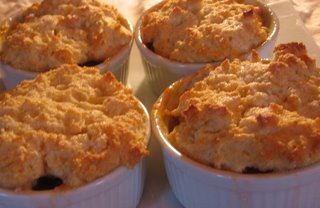
I have a thing for guys who brew. Or at least, I think I must. Why else would I keep giving guys brewing equipment?
You see, I gave my ex-husband a homebrew kit for Christmas one year, because he had said he wanted to try brewing. I should have know that wouldn't work out - he wasn't exactly the sort of guy who was interested in following through on hobbies that take time and effort. The box moved with us unopened through four apartments. Anyway, my boyfriend J. decided last year that he wanted to brew, so I toddled off to the homebrew store conveniently located just a few blocks away (Modern Brewer in Cambridge) and bought the man a brew kit for Christmas. Which then sat, gathering dust, in a corner of my apartment. Every once in a while I would roll my eyes and say something under my breath to the effect of "here we go again," but generally I tried not to bother him about it. God knows there are enough projects of my own sitting around the house, not finished or not even started. Shall we discuss watercolors? Or the sewing machine?
Moving on.
Finally, this weekend, J. decided it was time to brew. We were surprised that the initial part of the process went relatively quickly and easily. Of course, we're using a kit here, so there's no measuring or complications. Like a first time baker, we're learning the process before we start in on recipes. So we read the directions, sanitized the equipment, steeped the grains, added the malt, boiled the wort for a while, added the hops, boiled a little more, cooled as fast as we could, added the yeast and put the brewing bucket in a warm corner to do its thing.
Which it did not.
No bubbling in the airlock Sunday morning. Or Sunday night. By Monday morning, I had become convinced that the yeast, having aged in a corner of my living room through this summer's hellish heat spell, was dead-dead-dead-as-a-doornail-dead. So J. hauled over to the brew shop, got some more yeast (once given the blessing from the nice brewer-man to do so), added it to the bucket, and this morning.
Well, still no bubbles.
But look at what's going on tonight!
(Note: it's hard to get a photo of bubbles)


Bubble action! The beer, she is alive!
*Disclaimer - I don't actually like beer. Really. I like wine, and hard cider, and calvados, gin, tequila, rum, and sometimes bourbon, and I really think that's enough. I could learn to like beer, I'm sure, but I can't see a good reason to. But I love the idea of making it. I am pretty much in favor of learning how to do everything myself, so when the apocalypse comes - which George Bush is doing his best to make happen ANY DAY NOW - I will be deeply valued for my skills and knowledge. It could happen.


